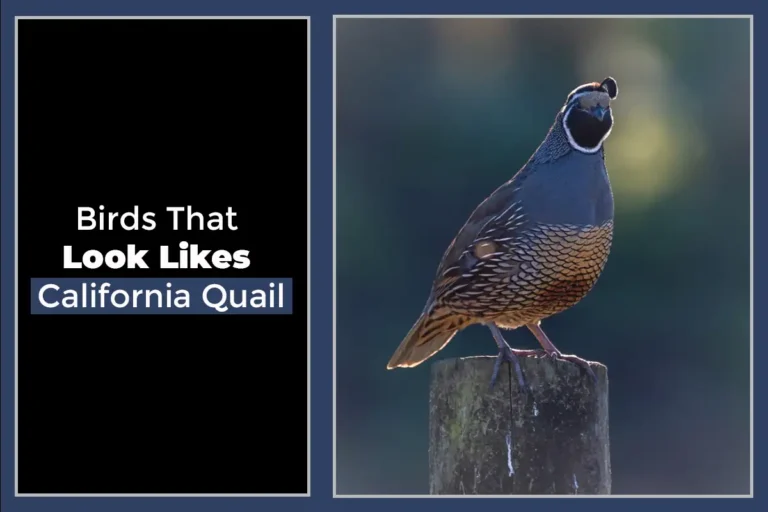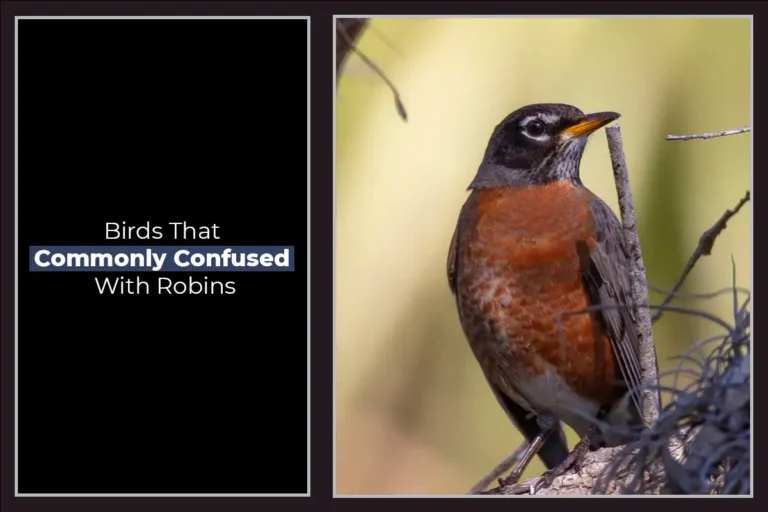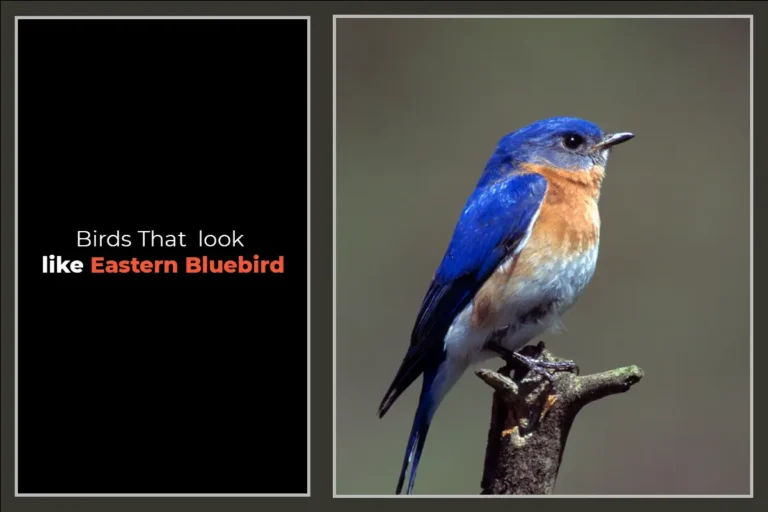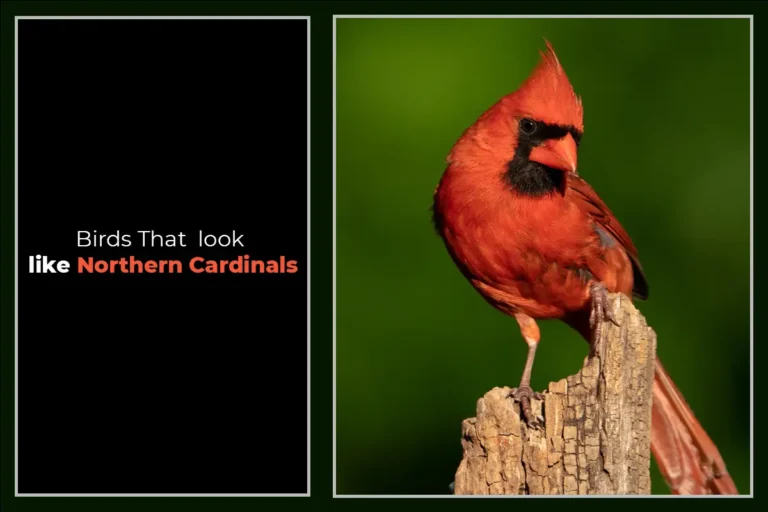10 Birds That Look Like the Willow Ptarmigan
The Willow Ptarmigan (Lagopus lagopus) is a medium-sized grouse distinguished by its camouflaged plumage that changes color to match its surroundings in northern climates.
With feathered feet for walking on snow and dense plumage to withstand cold temperatures, Willow Ptarmigans are well-adapted birds of the tundra.
Several other birds share visual similarities with the Willow Ptarmigan in terms of size, plumage, habitat, or behavior. This article explores 10 birds that an untrained eye could easily mistake for a Willow Ptarmigan.
Looking for more articles about similar bird:
01. White-tailed Ptarmigan
The White-tailed Ptarmigan (Lagopus leucura) is the smallest North American grouse, named for its white tail feathers visible in flight.

This high-altitude mountain species turns completely white in winter to camouflage with the snow.
Characteristics
- Small, stocky grouse with feathered feet
- Camouflaged plumage: brown in summer, white in winter
- Inhabits alpine and arctic tundra habitats
- Feeds on willow buds, flowers, and seeds
Similarities
- Both species are ptarmigans with feathered feet adapted for snow
- Plumage changes color from brown to white for camouflage
- Inhabit northern latitudes and high elevations
- Prefer open tundra habitat
Differences
- White-tailed ptarmigan has bright white tail feathers
- More restricted to high alpine areas
- Does not display such dramatic breeding plumage
- Smaller in size than willow ptarmigan
02. Rock Ptarmigan
The Rock Ptarmigan (Lagopus muta) lives among rocky mountain terrain across northern Europe, Asia, and North America.
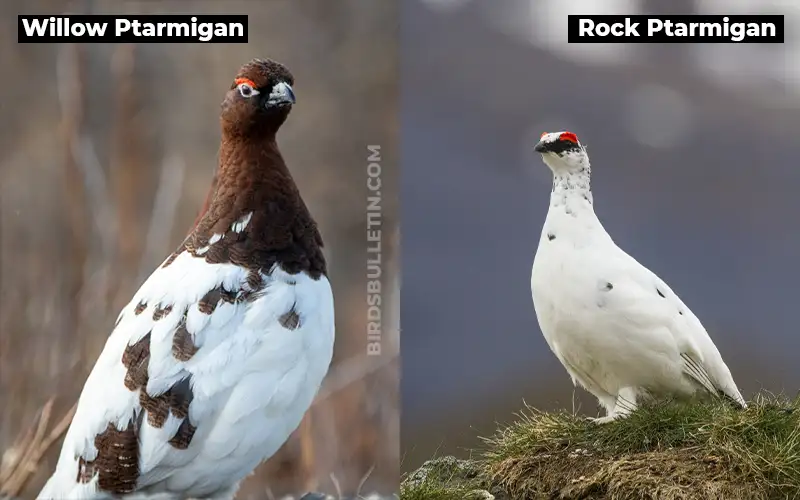
It is named for its habitat rather than its coloration.
Characteristics
- Stocky grouse with feathered feet for walking on snow
- Mostly brown but males display reddish plumage on the breast in summer
- Turns completely white in winter to blend in with snowy habitat
- Inhabits rocky alpine areas and arctic tundra
Similarities
- Both species have feathered legs and can walk on snow
- Males of both species develop red “eyebrows” during the breeding season
- Plumage changes from brown to white to camouflage with winter snow
- Northern species inhabiting alpine and tundra environments
Differences
- Prefers rockier terrain and steeper slopes
- Lacks the bold black and white breeding plumage
- Smaller than willow ptarmigan on average
03. Ruffed Grouse
The Ruffed Grouse (Bonasa umbellus) is a populous forest grouse ranging across much of North America.
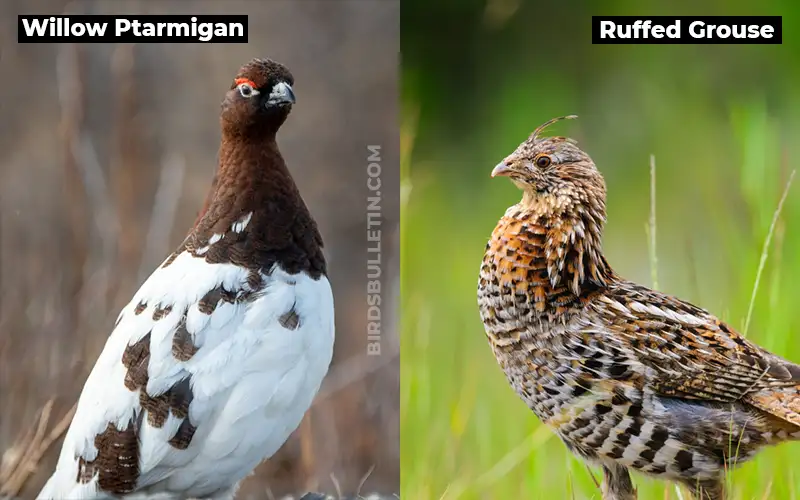
This chicken-like upland game bird is identified by the ruff of black feathers on the sides of its neck.
Characteristics
- Chicken-like with a slight crest on the head
- Best known for ruffs (black feathers) on the sides of the neck
- Males make a “drumming” sound by beating their wings rapidly
- Feather color varies from gray to brown
- Inhabits woodlands and brushy areas
Similarities
- Both are chicken-like grouse species
- Males of both species do territorial displays
- Overlapping habitat and range in Canada
- Traced white plumage; Ruffed Grouse tail, Willow Ptarmigan body
Differences
- Ruffed Grouse is more terrestrial, not a snowbird
- Lacks seasonal plumage change seen in ptarmigans
- No red eye combs during breeding season
- Prefers forest rather than open tundra
04. Red Grouse
The Red Grouse (Lagopus lagopus scotica) is a subspecies of the Willow Ptarmigan located in parts of northern UK and Ireland.
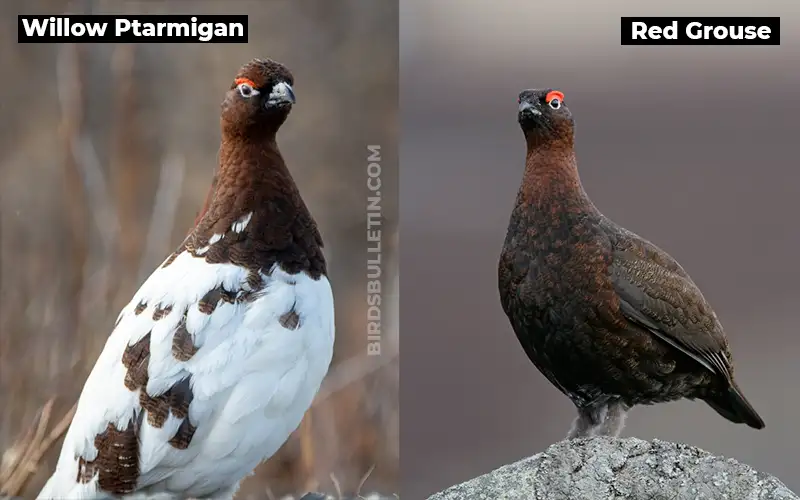
It is also called the moorland grouse for its habitat.
Characteristics
- Rotund chicken-like grouse with feathered legs
- Males are reddish-brown with yellow beaks
- Does not change plumage color as drastically between seasons
- Inhabits heather moors and bogs
Similarities
- Considered a subspecies of Willow Ptarmigan
- Males have reddish heads during the breeding season
- Both species inhabit open areas, wetlands, bogs
- Display territorial behavior
Differences
- Lacks dramatic seasonal plumage changes
- More sedentary lifestyle than the migratory willow ptarmigan
- Tail feathers are not as distinctive
- Restricted to British Isles moorland
05. Spruce Grouse
The Spruce Grouse (Falcipennis canadensis) is a chicken-like grouse dependent on coniferous forests across Canada and Alaska. It is essentially non-migratory.
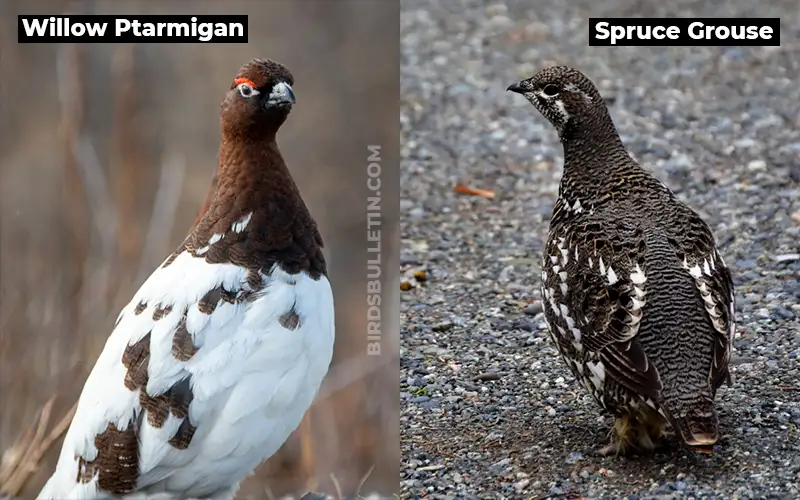
Characteristics
- The male has gray plumage with red eye combs
- The female is browner and whiter-striped
- Makes soft hooting, chuckling, and clicking sounds
- Feeds extensively on spruce and fir needles
- Inhabits boreal forests and taiga
Similarities
- Both species are grouse adapted to northern climates
- Males display red eye combs during breeding season
- Overlapping range across northern North American forest tundra
- Largely non-migratory northern species
Differences
- Spruce Grouse lacks seasonal plumage changes
- More solitary and not gregarious like Willow Ptarmigan
- Associated with conifer rather than open areas
- Larger size than the ptarmigans
06. Dusky Grouse
The Dusky Grouse (Dendragapus obscurus) is a forest grouse known for dramatically inflated bright red eye combs used to attract mates.
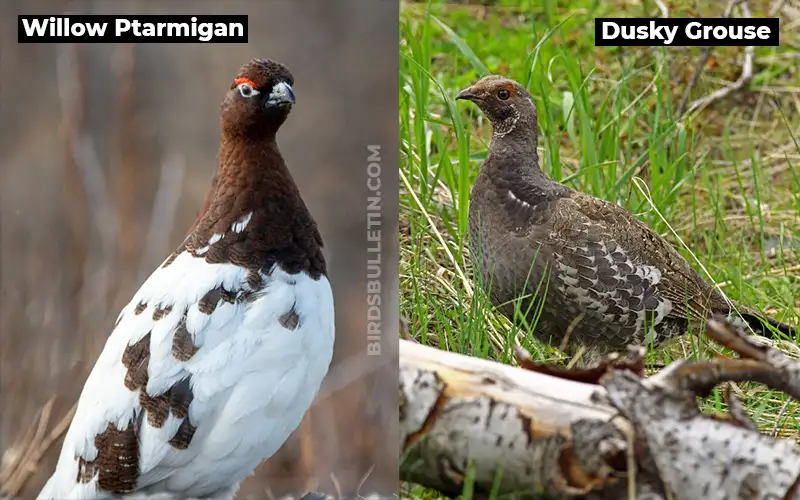
They inhabit coniferous forests of western North America.
Characteristics
- Chicken-like grouse mottled gray
- Males have red eye combs and yellow skin during display
- Make low hooting sounds
- Feed on leaves, buds, seeds, berry crops
- Scratch in litter seeking foods
Similarities
- Both species are grouse of northern latitudes
- Male displays include prominent red-eye combs
- Non-migratory populations overlap the range
- Prefer more open shrub areas during part of the year
Differences
- Dusky Grouse is strictly a forest species
- Lacks dramatic seasonal plumage changes
- Duskier coloration; not as boldly patterned
- Larger size than the ptarmigans
07. Sharp-tailed Grouse
The Sharp-tailed Grouse (Tympanuchus phasianellus) is a prairie grouse named for sharply pointed central tail feathers on males. Widespread grassland clearing and agriculture have impacted but not decimated their numbers.
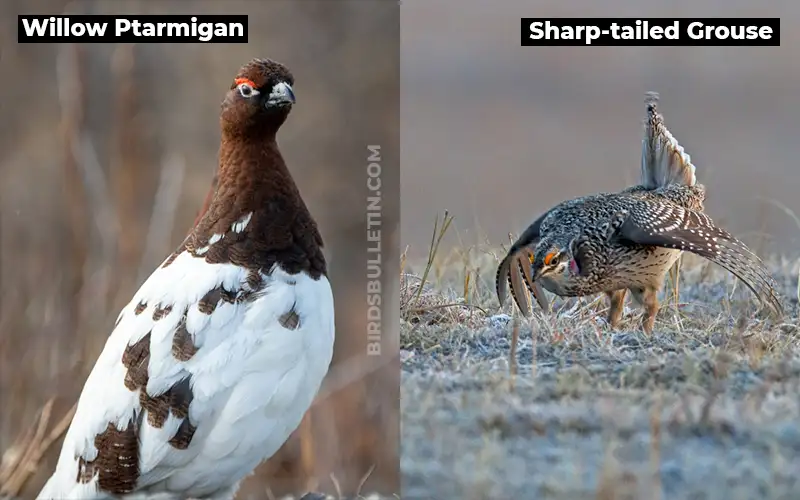
Characteristics
- Stocky pointed-tailed grouse
- The male has bold white spotting and a pointed tail
- Feathering provides camouflage among vegetation
- Inhabits open brush and grasslands
- Displays on communal dancing grounds
Similarities
- Both species are chicken-like grouse
- Overlapping populations across Canadian interior plains
- Males display on communal grounds to attract females
- Feathered legs provide insulation
Differences
- Largely non-migratory grassland rather than tundra bird
- Lacks dramatic seasonal plumage changes
- More social and gregarious behaved
- No showy eye combs among sharp-tailed grouse
08. Greater Prairie Chicken
The Greater Prairie Chicken (Tympanuchus cupido) is a large grouse that inhabits tallgrass prairies and oak savannas of central North America.

Their populations have declined significantly from historical levels.
Characteristics
- Chicken-like with rounded tail feathers
- Males have yellow eye combs and reddish air sacs
- Displays include bellowing sounds and puffed-up feathers
- Feeds mainly on plants, seeds, berries, insects
- Nests in open grasslands with shrub cover
Similarities
- Both species are plump chicken-like grouse
- Overlapping range on the Great Plains grasslands
- Males perform visual displays to attract mates
- Prefers open grassland habitat
Differences
- Greater Prairie Chicken lacks feathered feet for snow
- Does not display distinct seasonal plumage changes
- Larger in size than ptarmigans
- Grassy habitat unlike northern Willow Ptarmigan
09. Lesser Prairie Chicken
The Lesser Prairie Chicken (Tympanuchus pallidicinctus) is a smaller relative of the Greater Prairie Chicken, occupying sand sagebrush and scrub grasslands of the southern Great Plains.
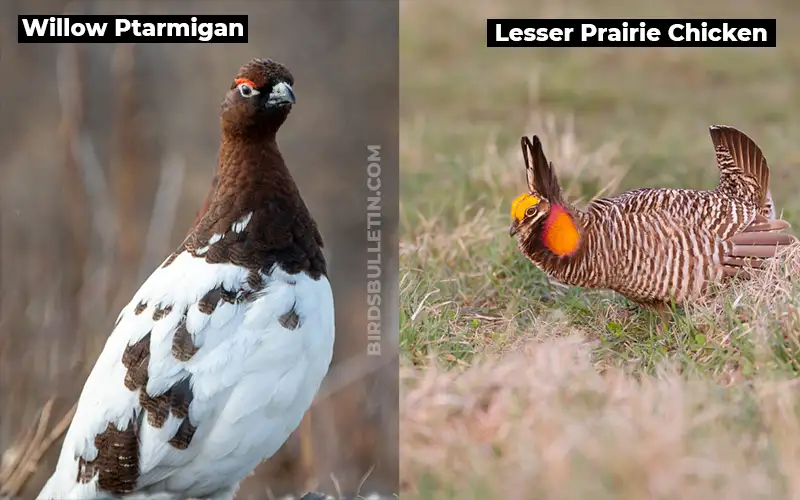
Characteristics
- Medium-sized grouse with a rounded tail
- Male displays reddish eye combs and neck sacs
- Makes a deep booming sound during breeding
- Sandy coloration provides camouflage
- Prefers native shrub and grassland habitat
Similarities
- Both species have terrestrial chicken-like form
- Overlaps range in central Canada grasslands
- Males perform visual displays to attract mates
- Open-country species prefer scrub habitat
Differences
- Lesser Prairie Chicken lacks feathered legs
- No dramatic seasonal plumage changes
- Sandy coloration unlike Willow Ptarmigan
- Larger in size than the ptarmigans
10. Sooty Grouse
The Sooty Grouse (Dendragapus fuliginosus) is a large, dark forest grouse inhabiting the Pacific Northwest region of North America. It blends into the shadowy understory of mature conifer forests.
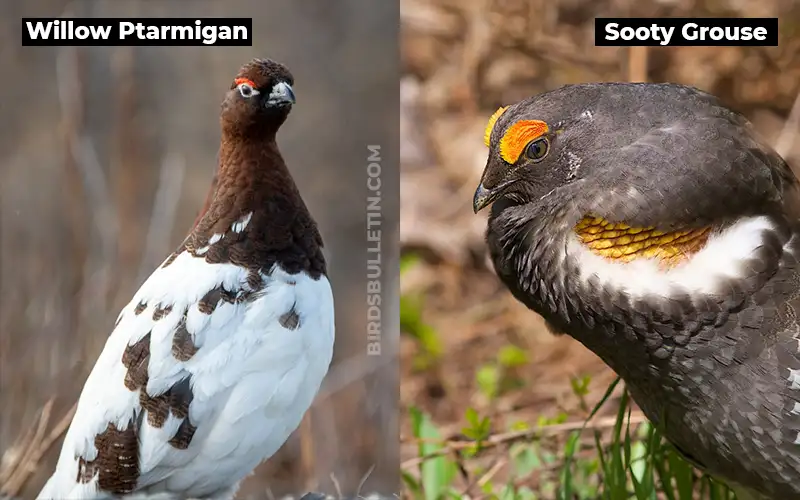
Characteristics
- Rotund chicken-like grouse
- The male has yellow eye combs used in the display
- The mottled gray-black color blends into forests
- The alarm call is a loud, hooting “warrr”
- Feeds on conifer needles and seeds
Similarities
- Both species inhabit northern latitudes
- Males develop conspicuous yellow-eye combs
- Prefer forest openings and clearings
- Overlapping populations in northwest Canada
Differences
- Sooty Grouse is strictly nonmigratory
- Lacks dramatic seasonal plumage changes
- Dark coloration unlike lighter Willow Ptarmigan
- Larger body size than the ptarmigans
Conclusion
The Willow Ptarmigan is certainly not the only bird out there that can be mistaken for the true Ptarmigan species. Ten lookalike species match the Willow Ptarmigan in size, silhouette, plumage details, or preferred habitat.
Yet most of these imposters differ by lacking feathered feet for deep snow, dramatic seasonal plumage changes, or display patterns seen in the Willow Ptarmigan.



